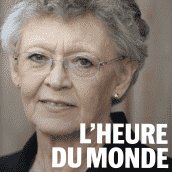Delivered. Appeared at the beginning of the 1980s, with the evocation of the first cases in the New York Times in July 1981, soon named “AIDS” (1983) and immediately a marker of a tenacious stigma, the disease does not belong to the past. And if the Museum of European and Mediterranean Civilizations (MuCEM), in Marseille, offered to invite him, commemorating forty years of devastation, it is not to close the page – still open – but, on the contrary, to propose a return to these four decades of a social and political history to be shared.
Also listen Françoise Barré-Sinoussi, co-discoverer of HIV, recounts the AIDS years
There is an assumed militancy in the approach, as in the adventure that mobilized the collection of these objects and documents, initiated in the mid-1990s by the National Museum of Popular Arts and Traditions, at the gates of the Bois de Boulogne, closed in 2005, before being reborn in Marseille, in 2013, in MuCEM. As before, it took a powerful commitment from those who did not accept the invisibilization of the sick and the silence surrounding the scourge. Patients, caregivers, artists striving to bear witness to a drama whose public representations were caricatures and dehumanized the victims, each wanted to ward off fatality and restore their dignity to the victims.
Intimate and collective upheavals
Carried by associative movements which have sometimes spectacularly challenged public opinion and the public authorities – we remember Act Up-Paris crowning the Concorde obelisk with a pink condom in December 1993 – the fight sees its story masterfully told in the book which appears in addition to the Marseilles exhibition. Often by the voice of those who reacted and acted first. At the controls of the book, the eight curators of the exhibition – seven researchers, most of them anthropologists, and a manager of operational research from Sidaction, Vincent Douris, who here collects the words of a dozen witnesses. By other means, they take up the challenge of a struggle exhibition: how to break the silence, curb contagion, reduce inequalities, particularly in access to treatment, while measuring the intimate and collective upheavals that AIDS has provoked.
All give way before the testimonies. And if Françoise Loux and Stéphane Abriol, pioneers of this singular project and responsible for the collection “History and memories of the fight against AIDS” (2002-2006), sign personal contributions alone, it is good as witnesses and actors . Even more for who discovers the terrible Triptych: survival essentials for HIV-positive people (2004), where Abriol shows, in a patient’s medicine cabinet, the drugs that tell the story of the evolution of therapies, simple milestones in the fight against death as long as the cure is not at hand. agenda.
You have 45.72% of this article left to read. The following is for subscribers only.
